Operation "Citadel": an attempt by the German army to regain the initiative
General situation
The spring thaw in March 1943 put an end to the 9-month-long bitter struggle on the Eastern (Russian) Front. The Russian army blocked and destroyed the best 6th German army in Stalingrad. The Russians seized the strategic initiative and tried to develop success in the north, in the center and especially in the south, trying to encircle and destroy the southern wing of the German army (How the Soviet Headquarters prepared the Caucasian cauldron).
However, the German army had not yet been defeated, retaining its former skill and power, it could deliver strong counterattacks. The Germans fought furiously, skillfully maneuvered, transferred mobile formations from one sector of the front to another, retreated in time, shortening the front line and compacting defensive formations in other sectors. As a result, the Germans were able to create a new strong defense in the south, avoiding a catastrophe that could lead to a sharp deterioration in the situation of the Third Reich. The Germans voluntarily left bridgeheads in the central and northern sectors of the front, forestalling the Red Army, who were trying to cut off these ledges.
The Soviet armies suffered heavy losses, needed rest and replenishment with people and equipment. The German army also suffered serious losses. Muds began, tanks and other heavy weapons sank in the mud. Therefore, both sides decided to temporarily abandon offensive operations, regroup their forces and prepare for the summer campaign of 1943, which was becoming decisive.
The Nazis could no longer conduct an offensive along the entire front, as in the course of the 1941 campaign, or in one strategic direction, as in 1942. This was caused both by the heavy losses of the German army and the growth of the power of the Red Army. The Russian command has become more flexible and experienced. Soviet industry was restructured, increasing the production of high-quality military equipment.
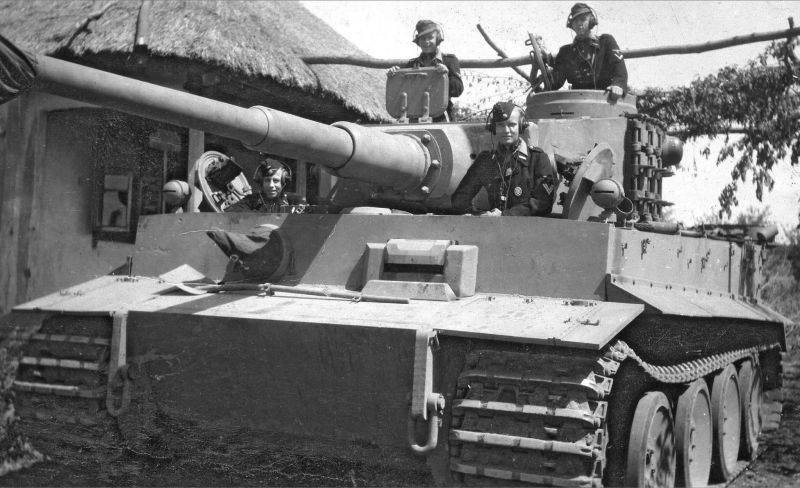
German tank Pz. Kpfw. VI "Tiger" before the start of the operation "Citadel" in the village of Budy
Struggle for strategic initiative
Part of the German generals were inclined towards the idea of the army going on the defensive. If one could not count on a decisive offensive in Russia, then it was necessary to go on the defensive. The benefits were obvious. The German defense took place in the depths of our land, the Russians could not cause significant damage to the Reich itself. In the rear there was enough room for maneuver, where it was favorable, it was possible to conduct a stubborn defense, and in other sectors, if it was advantageous, it was possible to withdraw, regroup forces and counterattack.
The German army itself, especially the formations that fought on the southern wing of the front, overcame the “Stalingrad shock”. Many divisions, including all armored and many infantry divisions, were withdrawn to the rear for rest and replenishment. They trained almost as in peacetime. Even the divisions that were at the front had the opportunity to withdraw to the rear for rest and training of individual units and units. Morale in the Wehrmacht was still high, as was the quality of combat training.
However, Hitler understood that Germany was not ready for a protracted war of attrition. The military-political situation was constantly deteriorating. Anglo-American troops took up North Africa, preparing to land in Italy. The Red Army was building up its power. The only hope for victory was a powerful, crushing blow on the main front - the Russian.

Operation "Citadel"
For the offensive, a ledge was chosen, which went west of Kursk into the location of the German army for almost 200 km along the front and 120 km in depth. The plan of the German command was to strike from the north from the area south of Orel and from the south from the Belgorod area, to close both shock wedges east of Kursk, to surround and destroy large enemy forces located on the Kursk ledge. A decisive success with insignificant own losses made it possible to seize the initiative and develop the offensive.
Due to the concentration of forces, the exposure of neighboring sectors of the front and the use of almost all the newly formed operational reserves, the Germans created a powerful strike force, numbering up to 50 divisions (including 34 tank and motorized), 4 tank brigades, 6 separate tank battalions and 8 divisions of assault guns . The total number, according to Soviet data, was about 1 million people, about 10 thousand guns, more than 2 thousand aircraft and over 2,7 thousand tanks and self-propelled guns.
The command of the troops was carried out by Field Marshal von Kluge (Army Group Center) and Field Marshal Manstein (Army Group South). Organizationally, the strike forces were part of the 2nd Tank, 2nd and 9th Armies (commander - Field Marshal Model, Army Group Center, Orel region) and the 4th Tank Army, the 24th Tank Corps and operational Kempf group (commander - General Goth, Army Group South, Belgorod region). The 2nd SS Panzer Corps (southern front) included several elite SS Panzer Divisions: the 1st SS Panzer Division "Leibstandarte SS Adolf Hitler", the 2nd SS Panzer Division "Reich", the 3rd SS Panzer Division " Dead Head".

Hitler constantly postponed the start of the operation. The Fuhrer wanted to use as many of the new Panther tanks as possible in the operation, which had recently been put into mass production and had high hopes for them. The tense situation in Western Europe, especially in Italy, also played a role.
The preparation of the Germans for an offensive against the Kursk salient was discovered by Soviet intelligence. The Red Army was well prepared: a defense in depth, saturated with anti-personnel and anti-tank barriers, was created, especially powerful in the southern and northern parts of the Kursk salient. Large reserves were also formed, including powerful mobile formations.
On July 5, 1943, the Germans launched an offensive simultaneously from the north and south. However, despite all efforts, the use of all forces and resources, powerful air support, it did not work to break through the Russian defenses. The German 9th Army, advancing on a front of 90 km, managed to penetrate our defenses by only 10-12 km. More successful was the strike of the 4th Panzer Army in the southern sector. But even he did not bring decisive success, German tanks were able to cover 35 km with heavy fighting. On July 12, the Germans were stopped.
The Russian command, which had large reserves, responded not only with powerful counterattacks, but launched its own powerful offensive. As a result, the German army was defeated in the largest battle, and finally lost the initiative. The Russians seized the strategic initiative and did not give it up again until the end of the war.
The radical turning point in the Great Patriotic War was completed.
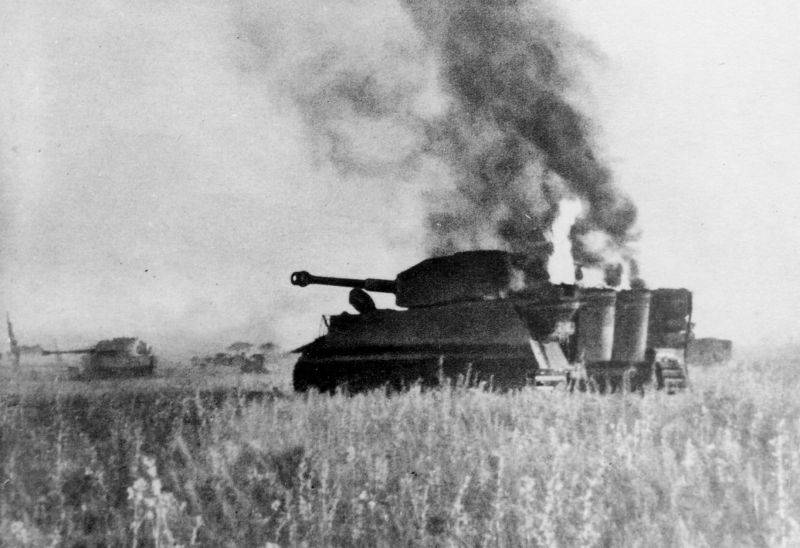
Burning German tank Pz. Kpfw. VI "Tiger" in the field during the operation "Citadel"
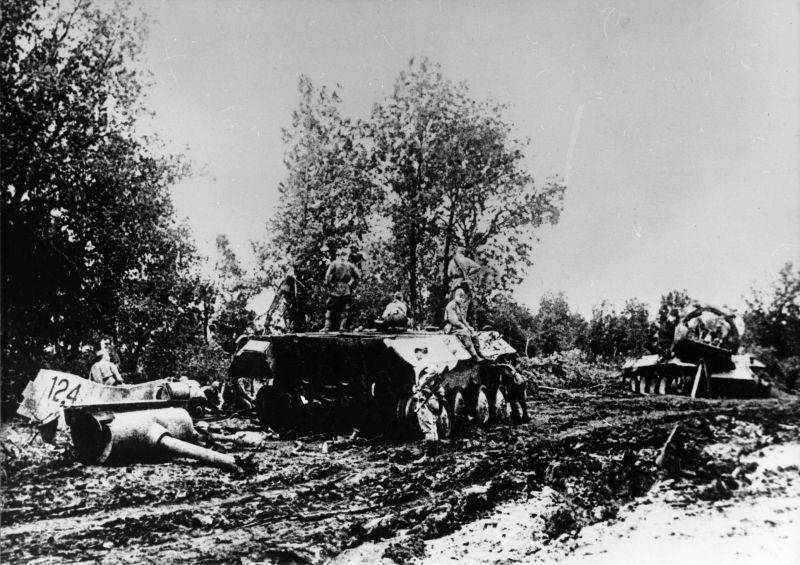
Soldiers of the Red Army inspect the German tanks Pz. Kpfw. V "Panther", shot down on the Kursk Bulge
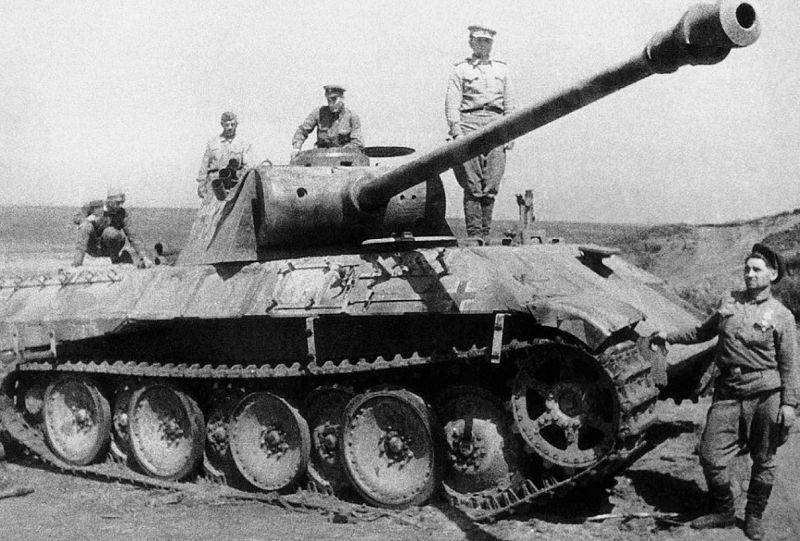
Officers and soldiers of the Red Army on the tank of the Wehrmacht "Panther" Pz. Kpfw. V Ausf. D, captured during the fighting on the Kursk Bulge
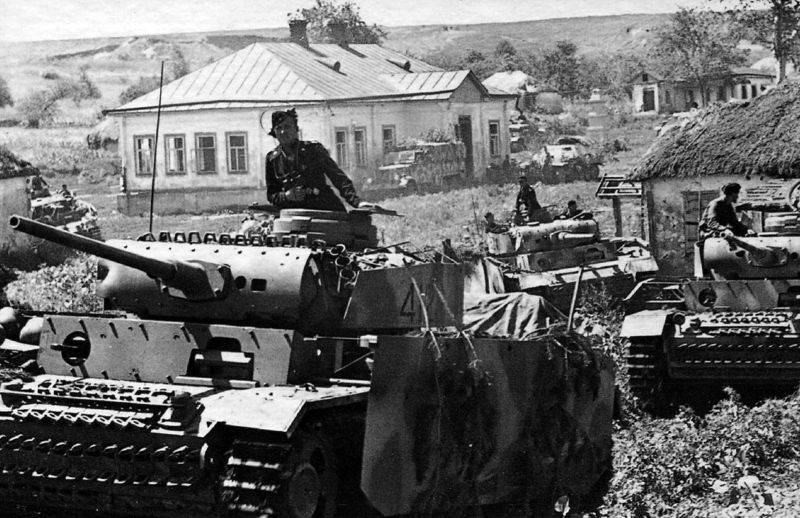
Information